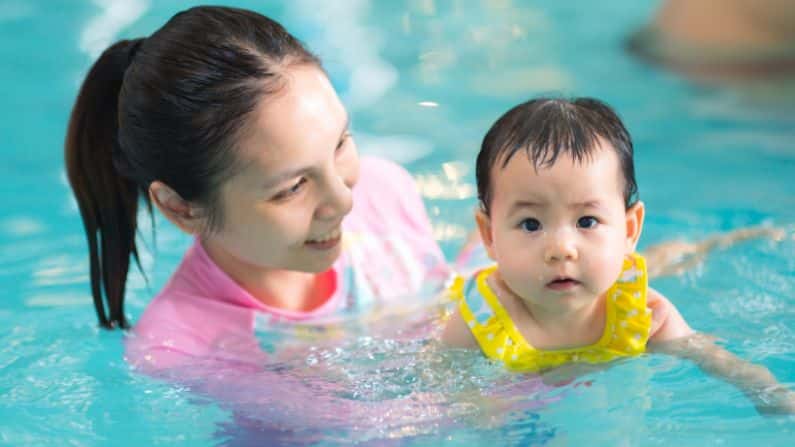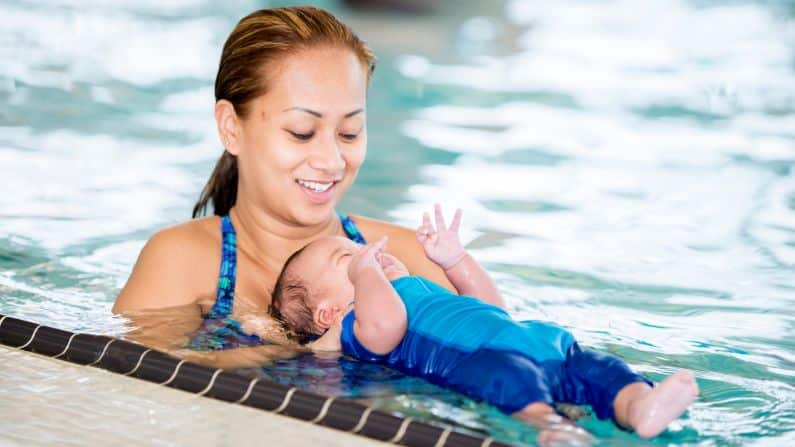Do you want your little one to start learning how to swim? Then you may be wondering what the best practice is in how you can help children progress in swimming lessons. Being in the water can be a dangerous place. Children need to learn not only how to survive in the water, but how to be efficient swimmers. Whilst it is always best practice to learn about water safety for children through platforms such as Kids Alive do the Five, it is also helpful to learn how you can help children progress in swimming lessons by following the expert tips outlined below.
Take it One Step at a Time
To help children progress in swimming lessons, learning to swim should follow a progressive teaching and learning system. You should break the skills down into small and achievable steps, and then build upon them. You should not rush children to progress or advance up to a higher level, until basic individual skills, such as floating or kicking, have been mastered.
Children should feel good about their progress, however, slow it may be. Ideally during the very early learn to swim stages, parents should give their children regular exposure to water. Time to play outside of the formal swimming lesson also helps. This will help to build their confidence and speed up the formal learn to swim process. Learning to swim well will take years to accomplish, so have patience and enjoy the journey with your child. Swimming is a skill that will be sure to last a lifetime.

Increase Your Child’s Confidence
Children should be building independence and relaxation in the water. Infants learn how to be independent by the way their parent holds them in the water. Parents should always hold babies gently, and allow them to feel the water’s buoyancy. Furthermore, if parents learn a variety of ways to hold and maneuver their baby through water, they themselves become more relaxed, and this relaxed feeling will rub off on the child.
Older children experience independence by exposing themselves to a variety of water depths. We recommend that children are able to stand in shallow water whilst in the initial learn to swim stages. This allows the child to remain in control and builds up their confidence.
Learn Breath Control
The next important step in how you can help children progress in swimming lessons is learning breath control. It is not best practice when children are forcibly submerged into the water without warning. Instead, infants should be taught breath control on command by a method called ‘conditioning’. During this practice, the parent pours water smoothly and evenly over the baby’s forehead after using the trigger words “ready, go.”
You must encourage older children to participate in voluntary breath control activities. A parental demonstration, where Mummy or Daddy submerges their own face in the water, is ideal to encourage this. It is most important that parents and swimming teachers never force or hold a child’s head underwater. We should establish breath control first, rather than blowing bubbles. Blowing bubbles with beginner swimmers often results in them drinking or sniffing water up their nose. This can be quite stressful in the early learn to swim stages. As a result, we wait until the child can master breath control before we teach them to exhale their bubbles underwater.
Practice Free Floating
Free-floating is the basis of all learn to swim, and therefore should be the most practised swimming activity. Always remember our building block approach, and only attempt floating activities once children have happily mastered breath control and underwater submersions. Children must learn natural body buoyancy to become relaxed and confident in the water. For this reason, you should not use floaties and back bubbles in formal swimming lessons. You can use these devices for safety if you supervise more than one child at a time, but it can give children a false sense of security. It also places children in a vertical position but instead, we want to establish a good horizontal body position in the water from a very young age.

Freestyle and Backstroke Techniques
Establishing how to float is essential to develop great freestyle and backstroke techniques. For this reason, propulsive movements should not be taught before the child establishes and masters float patterns. Encouraging children to use their arms and legs before they can float, results in them thrashing and struggling in the water as they endeavor to keep themselves afloat. Once children learn to float, it is much easier to teach them a relaxed, slow and natural feel for the water.
Join our community and keep up to date with new articles, special offers - it is free to join!
Looking for more information on learning how to swim - don't go past the Swim Library.
